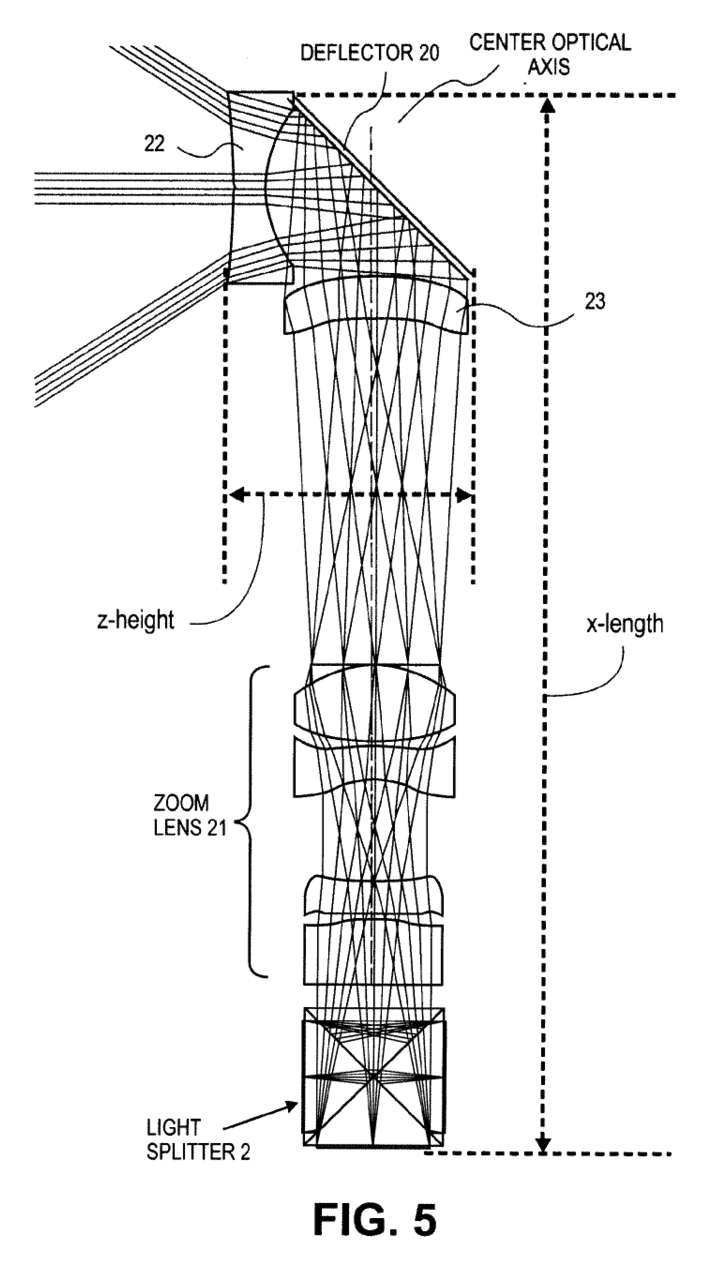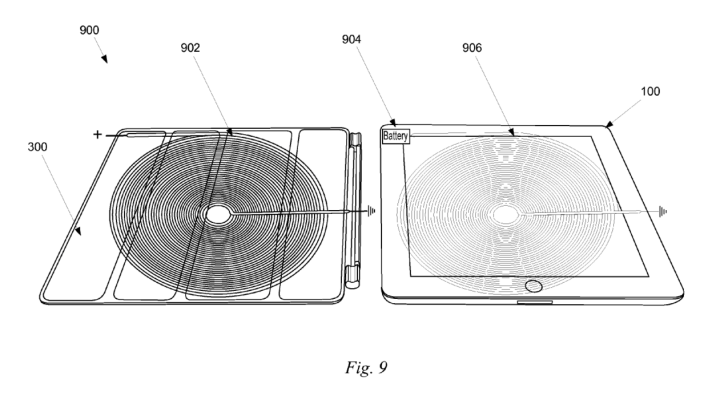Apple has a couple of new interesting glimpses into possible new future tech published by the USPTO today, including a patent application for an iPad Smart Cover with a built-in battery and induction charging, and a mobile camera design that offers true optical zoom, instead of the low-quality digital zoom we’re all used to in current devices.
The induction charging patent application (via AppleInsider) makes the Smart Cover about a thousand times more useful than it is in its current form. It adds an inductive charging coil to the Smart Cover, which can transmit to a receiving end within the iPad itself. The Smart Cover would also contain a battery within its segmented padded divisions, which would make it possible to charge up the iPad when the Smart Cover is covering the iPad’s screen and lined up properly via the existing built-in magnets, or when folded behind the iPad to prop it up for viewing.
The Smart Cover itself would need to be plugged in to charge, or alternatively could be fitted with solar panels to pick up extra juice from ambient light. But the big news for the larger ecosystem would be that the iPad itself would have to be outfitted with wireless charging equipment. So long as Apple stuck with an accepted standard like Qi for that tech, it would open the door for plenty of new opportunities from third-party accessory makers: you can basically taste the fresh batch of new Kickstarter projects.
In a second application published today (via UnwiredView), Apple describes a new type of digital camera for inclusion in mobile devices, which would enable optical zooming in a module that’s still small enough to fit inside of an iPhone 5’s case. Basically, the camera would bounce incoming light off of an internal mirror at a 90-degree angle, meaning it could use the entire width of the phone to build a lens and optical zoom element rather than just being limited by the thickness of the device’s body from front to back.
 The patent also describes using a light splitter cube to break up incoming light into separate red, blue and green frequencies, which makes it possible to use camera sensors that are more color-accurate, and take in much more light in the same environment vs. sensors that have light-splitting features built in. Once again, this is made possible thanks to the added room for camera elements Apple would be able to use by changing the orientation of the camera components to lengthwise across the device via the mirror behind the lens on the back of the camera.
The patent also describes using a light splitter cube to break up incoming light into separate red, blue and green frequencies, which makes it possible to use camera sensors that are more color-accurate, and take in much more light in the same environment vs. sensors that have light-splitting features built in. Once again, this is made possible thanks to the added room for camera elements Apple would be able to use by changing the orientation of the camera components to lengthwise across the device via the mirror behind the lens on the back of the camera.
Both of these patents are significant, because they provide avenues Apple can explore to add truly new and useful features to the iPad and iPhone. Induction charging has been rumored as a possible feature of the iPhone 5, the iPhone 5S and the iPhone 6, but so far it hasn’t come to pass. Apple generally waits on wireless tech for it to prove its value with consumers before adding it to their products, however. The camera design modification, however, is something it could easily implement ahead of anyone else, since Apple tends to focus special attention on camera improvements in the iPhone, especially when making otherwise iterative improvements (as in the leap between the iPhone 4 and 4S, for instance).
Dramatic changes to product hardware would go a long way toward helping Apple address criticism that it’s ‘falling behind’ rivals like Samsung in the innovation department, and these in particular would be impressive by avoiding the specs race in favor of more interesting changes with real relevance to users. Still, Apple’s patents are never a good indicator of immediate product development strategies, so don’t hold your breath for these features in Apple’s next generation of devices.
